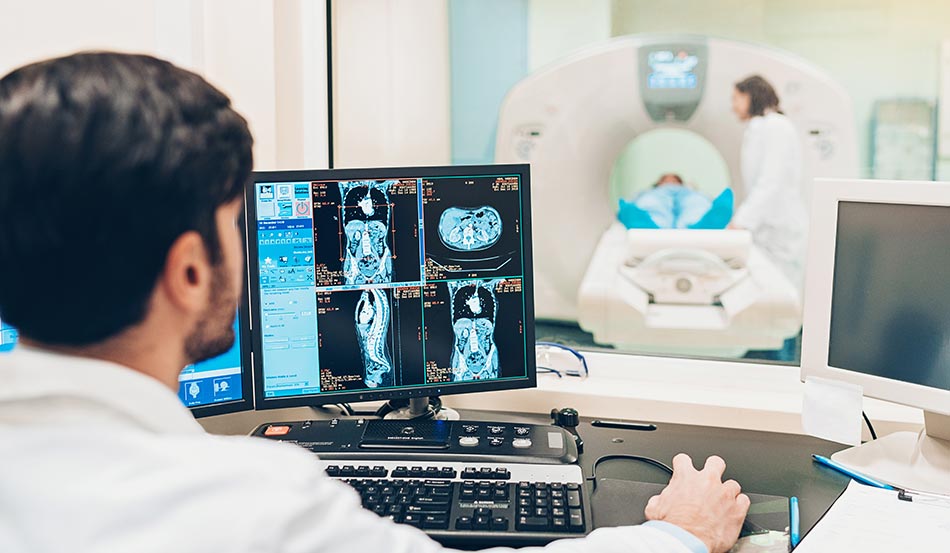If you’ve been told you need MRI or CT scans, you may have a few questions. While traditional X-rays are still used for imaging in some cases, today’s technology allows for more detailed visuals of the inside of a patient’s body. Common imaging techniques include magnetic resonance imaging and computerized tomography. The differences between MRI and CT scans specifically are based on how the equipment functions, as well as what part of the body needs to be examined and why.
What is an MRI?
MRI stands for magnetic resonance imaging. It uses a magnetic field and radio waves to make detailed pictures of the inside of your body. These images are layered on top of each other to provide radiologists with a clearer understanding of the inside of your body.
MRIs are often used for images of:
- Joints
- Wrists
- Ankles
- Breasts
- Blood vessels
- Organs such as the heart, the brain, and kidneys
What is a CT Scan?
CT Scan, or CAT Scan, stands for computerized tomography. A CT scan takes a series of X-rays around your body and uses computer technology to create cross-sectional 2D images, or slices, of the area that is being imaged. When stacked together, these 2D images can create a 3D image, allowing for a much more detailed view than traditional X-rays can provide.
CT scans are often used to examine muscles, bones, and tumors, as well as to find internal bleeding.

CT scan equipment involves is a doughnut-shaped structure called a gantry that circles around the patient. The chamber of an MRI machine, on the other hand, is often enclosed.
Differences Between MRI and CT Scans
The biggest difference between MRI and CT scans is that MRIs use radio waves while CT scans use X-rays.
Following are several others.
- MRIs are typically more expensive than CT scans.
- CT scans may be quieter and more comfortable.
- MRIs may take longer than CT scans. The length of time depends on the part of the body that is being imaged, but an MRI can take anywhere from 10 minutes to more than an hour. The average MRI time is about 40 minutes.
- MRIs can show more detail than CT scans.
- CT scans briefly expose patients to radiation. MRIs do not.
- CT scan machines are open, which helps prevent anxiety among patients who are concerned about being in closed spaces. Instead, it uses a doughnut-shaped structure called a gantry that circles around the patient. On the other hand, the chamber of an MRI machine is often enclosed, and more of the body may be within an MRI chamber during imaging. Open MRI machines are available as well, which can be helpful for patients who are nervous about being in the enclosed chamber.
Similarities Between the Imaging Techniques
There are several similarities between both imaging processes. First, both have certain risks, such as the exposure to radiation during an MRI. In some cases, a contrast dye may be used with either MRI or CT, but some patients can have a negative reaction to the dye. Additionally, both can be used to identify and monitor cancers, depending on where the cancer is located. Finally, patients who have a fear of enclosed spaces may have anxiety with either process, although various remedies can help calm patients.
For more information about the differences between MRI and CT scans, contact the Insight Imaging Center.


Recent Comments